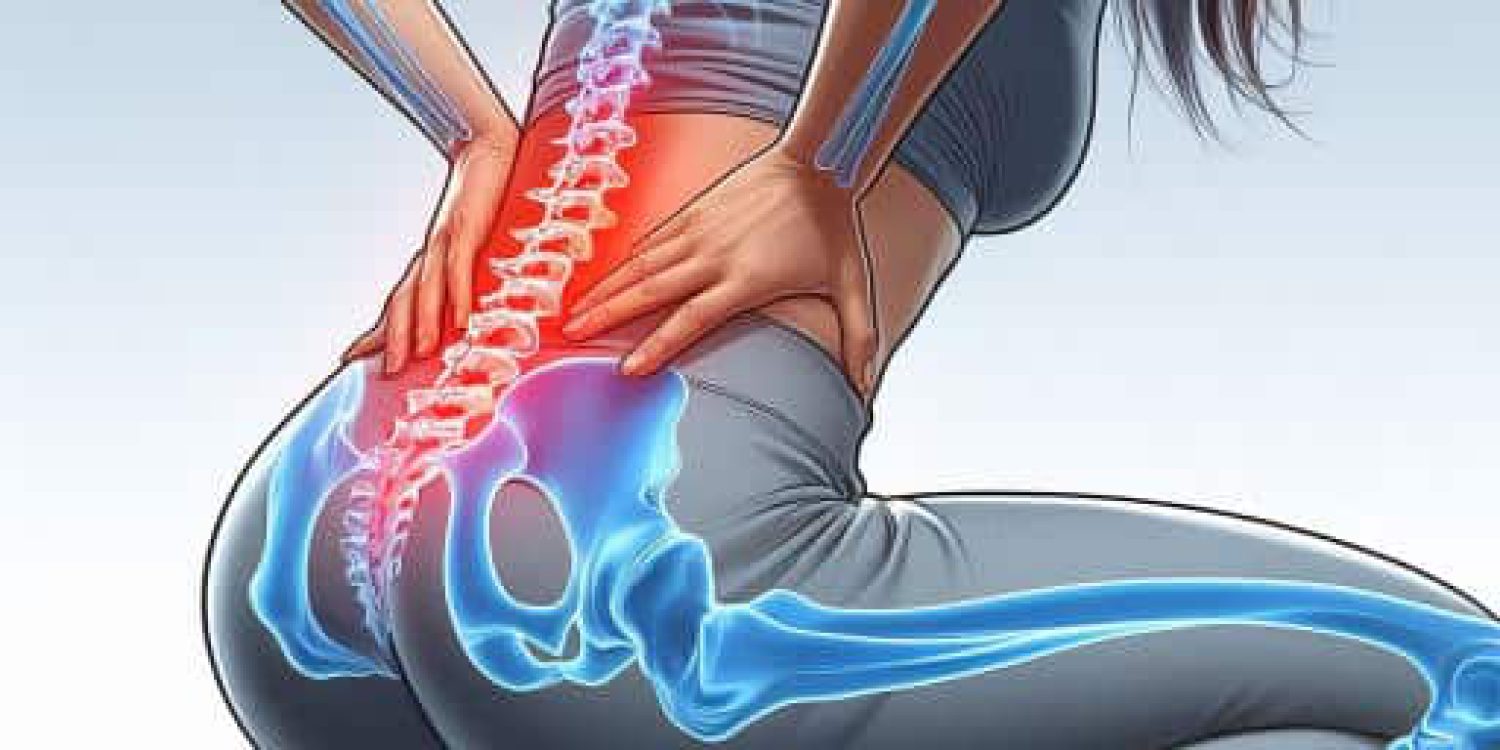Sciatica may significantly impact everyday life and affect millions of individuals worldwide. It starts in the lower back and travels down the leg, causing pain, numbness, and tingling. One must know the causes, symptoms, and diagnosis to manage and treat sciatica effectively. Learning more about this illness empowers individuals to manage their pain and enhance their well-being.
Key Takeaways
- Sciatica results from compression or irritation of the sciatic nerve, which causes pain, numbness, and weakness in the lower back, buttocks, and legs.
- Early treatment for sciatica pain is essential to prevent the condition from worsening and causing long-term damage to the nerve.
- Medications such as pain relievers, muscle relaxants, and corticosteroids can provide temporary relief for sciatica pain but may also have side effects.
- Physical therapy and exercise can help alleviate sciatica pain by improving flexibility, strength, and posture.
- Chiropractic care may relieve sciatica pain, but its effectiveness is still debated among medical professionals.
Understanding Sciatica: Causes, Symptoms, and Diagnosis
 The sciatic nerve, which originates in the lower back and runs down the leg, can become compressed or irritated and cause sciatica. Various things, such as spinal stenosis, ruptured discs, or muscle imbalances, can cause this compression. Pain, numbness, and tingling in the legs and lower back may result from a compressed nerve.
The sciatic nerve, which originates in the lower back and runs down the leg, can become compressed or irritated and cause sciatica. Various things, such as spinal stenosis, ruptured discs, or muscle imbalances, can cause this compression. Pain, numbness, and tingling in the legs and lower back may result from a compressed nerve.
Herniated discs are a common source of sciatica because they happen when a disc's inner, softer material pushes on the nerve roots through the disc's outer, more complex layer. Sciatica can also result from spinal stenosis, a condition marked by spinal canal narrowing. Inadequate posture, obesity, and muscular imbalances are other causes of sciatica.
Combining imaging investigations, physical examinations, and nerve conduction testing is common practice to diagnose sciatica. A healthcare professional will check the patient's strength, reflexes, and range of motion during a physical exam. Imaging procedures such as X-rays or MRI scans could be prescribed to view the spine and detect structural problems. A nerve conduction study might help rule it out if you suspect a nerve injury or malfunction.
The Importance of Early Treatment for Sciatica Pain
To alleviate sciatica pain and avoid worsening symptoms, therapy should begin as soon as possible. If you put off getting treatment, your symptoms can get worse or even cause permanent nerve damage. Individuals can lessen their pain and enhance their quality of life by obtaining therapy as soon as symptoms emerge.
Pharmacological, physiotherapeutic, chiropractic and surgical methods are available to treat sciatica. Inflammation and pain can be reduced by using muscle relaxants and nonsteroidal anti-inflammatory medicines (NSAIDs). To alleviate pressure on the sciatic nerve, physical therapy focuses on increasing flexibility and strengthening the muscles around the spine. Spinal manipulation and mobilisation procedures are part of chiropractic therapy, which aims to straighten the spine and relieve pressure on nerves. To alleviate severe sciatic nerve compression, surgery may be required.
Medications for Sciatica: Pros and Cons
The inflammation and pain caused by sciatica are often treated with medication. Ibuprofen and naproxen are NSAIDs that can help decrease inflammation and pain in the afflicted region. When sciatica symptoms include muscular spasms, a doctor may recommend a muscle relaxant to help alleviate the pain.
Drugs may alleviate symptoms for a while, but they aren't without hazards and adverse effects. Long-term or excessive use of NSAIDs increases the risk of stomach ulcers, renal issues, and cardiovascular disease. Over time, using muscle relaxants can lead to sleepiness, vertigo, and reliance.
Collaborating closely with a healthcare professional is critical to ascertaining the optimal drug schedule for specific requirements. They can evaluate the intensity of symptoms, consider preexisting diseases or drugs, and look for adverse consequences.
 Physical Therapy and Exercise for Sciatica Pain Relief
Physical Therapy and Exercise for Sciatica Pain Relief
Physical therapy is essential for alleviating sciatica pain by increasing flexibility and strengthening the muscles surrounding the spine. Working with a physical therapist, you may create an individualised workout programme to enhance and correct any imbalances or weak spots.
One of the most popular exercises for sciatica pain alleviation is hamstring stretching, which helps to relieve strain on the sciatic nerve. Strengthening the abdomen and back muscles, among other things, may aid spinal stabilisation and lessen the load on the lower back. Aerobic activities that do not put too much strain on the body, such as swimming or walking, can help with fitness and recovery.
Proper and safe workout execution requires collaboration with a physical therapist. They may help you with your form, monitor your development, and adjust your workout routine.
Chiropractic Care for Sciatica: Does it Work?
Chiropractic treatments can straighten the spine noninvasively to relieve pain and nerve constriction. Chiropractors use various therapies, including spinal manipulation and mobilisation, to fix misalignments and promote better spinal health.
Research shows that chiropractic therapy can alleviate sciatica pain. Compared to medicine, chiropractic adjustments provided better pain relief and functional improvement for those suffering from acute sciatica, according to the Journal of Manipulative and Physiological Therapeutics.
Most people report no adverse side effects in the hands of a trained chiropractor. However, some might not be able to use chiropractic therapy because of health issues or spinal deformities. Before getting chiropractic therapy, it is crucial to check with a healthcare practitioner to verify that it is appropriate for specific requirements.
Acupuncture and Massage Therapy for Sciatica Pain
Alternative pain management methods, such as acupuncture and massage treatment, can alleviate sciatica symptoms by easing muscular tension, increasing blood flow, and calming the nervous system.
Acupuncture is a kind of alternative medicine that strategically places very thin needles to influence the body's energy channels and speed up the healing process. According to research, acupuncture has demonstrated promise for alleviating sciatica pain and enhancing functional abilities. The Journal of Traditional Chinese Medicine reported an investigation that indicated acupuncture was superior to medicine for the relief of sciatica pain.
Massage treatment aims to increase blood flow and decrease muscular tension by manually manipulating soft tissues. For those who suffer from sciatica, it may be a great way to ease their pain and unwind. According to research published in the Journal of Bodywork and Movement Therapies, massage treatment successfully alleviates pain and enhances function in individuals suffering from persistent lower back pain, including sciatica.
Seek the services of licenced acupuncturists and massage therapists who treat sciatica. Based on their findings, these professionals can create a personalised treatment plan to alleviate aches and pains.
 Natural Remedies for Sciatica: Herbs, Supplements, and Essential Oils
Natural Remedies for Sciatica: Herbs, Supplements, and Essential Oils
Natural therapies can be used with conventional treatments to alleviate sciatica pain. The anti-inflammatory and analgesic characteristics of some plants, vitamins, and essential oils can relieve symptoms.
Curcumin, an ingredient in turmeric, is a spice with anti-inflammatory properties. One possible way to decrease inflammation and relieve sciatica pain is to take turmeric pills or include them in your diet.
Magnesium is a mineral that helps relax muscles and regulate nerve impulses. To alleviate muscle tension and nerve pain, try taking magnesium supplements or using magnesium oil topically.
Lavender oil's soothing and pain-relieving effects have made it a popular essential oil for ages. If you're experiencing sciatica pain or muscular stress, try massaging lavender oil into the region or adding it to a warm bath.
Natural treatments have their uses, but anybody with preexisting diseases, current prescriptions, or other health concerns should talk to their doctor before utilising any of these on their own. They can monitor for adverse effects, advise on the correct dose, and identify any interactions.
Surgery for Sciatica: When is it Necessary?
Surgical options may be considered when non-invasive methods of treating sciatica have not been successful or when severe nerve compression or injury is detected. To relieve pain, surgery is performed to locate and remove the cause of compression on the sciatic nerve.
Discectomy, laminectomy, and spinal fusion are among the surgical procedures that can alleviate sciatica. When a herniated disc presses on a nerve, a discectomy may be necessary to remove some of the affected tissue. Laminectomy removes some of the bony spine arches to alleviate pressure on the nerve. Spinal fusion involves merging two or more vertebrae to stabilise the spine and relieve nerve compression.
Although surgery offers excellent relief for some people, it is not without dangers and problems. Failed back surgery syndrome, infection, bleeding, and nerve injury are all possible complications. It is wise to consult a healthcare professional and examine surgery's potential advantages and hazards before making a final choice.
Lifestyle Changes to Manage Sciatica Pain
By making lifestyle adjustments and taking medication, you can control your sciatica pain and prevent it from getting worse. Being overweight puts extra pressure on the spine and makes existing problems worse, so it's crucial to maintain a healthy weight. Exercise regularly helps increase flexibility and strengthen the muscles surrounding the spine. Another way to lessen the load on your lower back is to choose ergonomic furniture and practice excellent posture.
Because stress can make sciatica symptoms worse (increased muscular tension and pain), stress management is essential for those with this condition. One way to enhance one's health and alleviate stress is to make practices like yoga, meditation, or deep breathing a regular part of one's routine.
 Preventing Sciatica: Tips for a Healthy Spine and Nervous System
Preventing Sciatica: Tips for a Healthy Spine and Nervous System
Managing sciatica requires a focus on prevention. Caring for their spine and nervous system can lessen their chances of getting sciatica or recurring bouts.
You must exercise regularly to keep your spine healthy and avoid developing muscular imbalances. Doing things that make you stronger, more flexible, and better at maintaining good posture may lessen your chances of getting sciatica. It is critical to construct a regimen that includes a variety of workouts, such as aerobic activities, weight training, and stretching.
To avoid sciatica, it is also essential to practice excellent ergonomics. This involves using the correct form while lifting heavy things, sitting or standing up straight, and using ergonomic furniture that follows the spine's natural curvature.
Sciatica may substantially influence everyday living, but sufferers can reduce pain and enhance their overall health with the proper knowledge and care. Individuals can successfully manage sciatica pain and avoid its worsening by getting therapy early, investigating various treatment options, and adopting lifestyle adjustments. Collaborating closely with healthcare professionals to create a unique treatment plan can better meet an individual's wants and goals. Improving health and quality of life is possible with proactive sciatica pain management.
If you're seeking a solution to your sciatica pain, consider high-intensity laser therapy. This novel approach to pain relief and wound healing has demonstrated encouraging outcomes. A new post on the MCR Therapies website delves into the advantages of high-intensity laser treatment for pain reduction. Learn how this innovative therapy can help reduce your sciatica pain! … Check out the article here.
MCR Therapies also offers other alternative therapies, such as cupping therapies, which have been known to unveil the mysteries of pain relief. To explore the wonders of cupping treatments, you can read their informative article here. Stay informed and up-to-date with the latest news and developments in pain management by visiting MCR Therapies' news section here.
FAQs
What is sciatica pain?
Sciatica is a type of pain that occurs along the sciatic nerve, the longest nerve in the body. It usually starts in the lower back and extends to the legs and feet.
What causes sciatica pain?
A herniated disc, spinal stenosis, or degenerative disc disease usually causes sciatica pain. Other causes include pregnancy, muscle spasms, and spinal tumours.
What are the symptoms of sciatica pain?
Sciatica pain symptoms include lower back, buttocks, legs, and feet pain. It can also cause numbness, tingling, and weakness in the affected area.
How is sciatica pain diagnosed?
Sciatica pain is usually diagnosed through a physical examination and medical history. Imaging tests such as X-rays, MRIs, and CT scans may also be used to confirm the diagnosis.
What are the treatment options for sciatica pain?
Physical therapy, pain medication, and surgery are treatment options for sciatica pain. Other treatments, such as acupuncture, chiropractic care, and massage therapy, may also be helpful.
How can I prevent sciatica pain?
To prevent sciatica pain, it is crucial to maintain good posture, exercise regularly, and avoid sitting or standing for long periods of time. It is also essential to maintain a healthy weight and avoid smoking.
References
- Ultimate Guide to Back Pain Relief | Integrity Physio. https://www.integrityphysio.com.au/blog/fixing-back-pain-with-physio/
- Sciatica Treatment in Homeopathy. https://arshadhc.com/Sciatica
- Is Swimming Good For Sciatica? Exploring The Benefits And Considerations. https://southendpress.org/is-swimming-good-for-sciatica/


























20 Comments
It’s intriguing to see sciatica discussed in such an accessible way. As someone who has personally navigated the challenges of this condition, I can vouch for the profound impact it has on daily activities and overall quality of life. The journey can often feel isolating, but understanding the underlying causes and treatment options truly empowers individuals to take control.
Navigating sciatica is often a complex and frustrating experience, and it sounds like you’ve had quite the journey. You touch on a crucial point about feeling isolated; chronic pain can make social interactions and everyday activities daunting. This isolation can compound the emotional impact of the condition.
Navigating sciatica really can feel like a rollercoaster, can’t it? There are days when the pain seems to take over, making everything feel a bit heavier. It’s interesting how chronic pain isolates us, sometimes even from our own lives. I’ve noticed that when I’m in a flare-up, just the thought of social gatherings feels overwhelming. It’s not just the physical pain; it’s the anxiety of explaining why I can’t join in or being concerned about how I’ll manage in a group.
I really appreciate your perspective. It’s true that sciatica can feel like a lonely road at times. When you’re in the thick of it, daily tasks can turn into major hurdles, and that can be pretty disheartening. I’ve heard from so many people that once they finally get the scoop on what causes their discomfort, it opens up a whole new world of possibilities.
I can relate to what you’re saying about the isolation that often comes with managing sciatica. It can feel like you’re navigating a unique path that others might not fully grasp. Understanding the underlying causes is indeed crucial—once you have that knowledge, it really shifts your perspective and can influence the choices you make regarding treatment.
I completely resonate with what you’ve shared about the isolation that can come with managing sciatica. It often feels like a silent struggle, doesn’t it? This experience can be particularly challenging when you notice that many around you may not fully understand the physical discomfort or the emotional toll it takes. It’s like you’re on this unique path where every step is both a physical challenge and a mental game.
I hear you on the isolation—understanding the root issues can truly change how we approach our discomfort, and I found some helpful insights on shoulder impingement that might resonate with what you’re experiencing.
‘Understanding Shoulder Impingement ‘
https://mcrtherapies.co.uk/understanding-shoulder-impingement/.
You bring up such an important point about the isolation that often accompanies conditions like sciatica. It’s true that many people might not grasp the emotional weight of what’s happening beneath the surface. One moment you’re trying to enjoy life, and the next, you might be struggling to stand up or sit comfortably.
Thank you for sharing your thoughts! I completely agree that the journey with sciatica can feel isolating, and gaining insights into similar conditions, like shoulder impingement, can be incredibly beneficial. If you’re interested, I came across a useful article that dives deeper into understanding shoulder impingement and might offer some helpful perspectives. Check it out here: [Understanding Shoulder Impingement](https://mcrtherapies.co.uk/understanding-shoulder-impingement/).
https://mcrtherapies.co.uk/ezi
You hit the nail on the head with that silent struggle vibe. It’s wild how sciatica can feel like you’re stuck in a movie with no dialogue—everyone else is casually chatting while you’re battling a brain fog and shooting pain that makes you want to start a one-person protest.
I can definitely relate to that feeling of isolation that comes with managing a condition like sciatica. It’s like carrying this invisible burden that others often don’t really see or understand. You’re right—it’s a unique blend of physical and mental challenges, and some days can feel like an uphill battle. I think it’s so important to share our experiences, not just to find support, but also to shed light on what so many are going through silently.
It’s insightful to hear how you relate to that feeling of isolation. Sciatica can really feel like a hidden weight, one that doesn’t show on the outside but carries a lot of emotional and physical strain. I’ve found that it’s often the small, everyday moments that become the toughest—like trying to get comfortable during a movie or planning a day out and worrying about the pain.
It’s interesting to think about how conditions like sciatica can really change the landscape of daily life. When you’re in the thick of it, those simple activities that used to be automatic can suddenly feel monumental. It does create a sense of isolation, doesn’t it? I remember when I first learned about the various causes; it felt like unearthing a hidden connection. There’s something empowering about educating ourselves and realizing we’re not alone in this journey.
You’ve made some very insightful points about the impact of sciatica on daily life. It’s true that when you’re in the grip of pain, even the most routine activities can become daunting. This disruption often leads to a sense of helplessness and isolation, as you’ve observed. Many people don’t realize how intertwined our physical comfort is with our daily routines and social interactions.
Absolutely, that sense of empowerment can really make a difference. If you’re looking for more insights and support on navigating sciatica, check out this resource that delves deeper into managing the condition and connecting with others who understand.
https://mcrtherapies.co.uk/yt
It’s great to hear your perspective on sciatica and how it affects daily life. That sense of isolation you mentioned is something many people experience, often feeling like they’re going through it alone. That’s why discussions around this condition are so important.
Thank you for sharing your experience! If you’re looking for more insights and helpful resources on managing sciatica, I invite you to explore this [link]. It could be a valuable step on your journey toward relief and empowerment.
https://mcrtherapies.co.uk/ig
I appreciate your thoughts on sciatica and the sense of isolation that often comes with it. It’s interesting how physical conditions can create such emotional challenges. I remember when I was dealing with my own struggles, it felt like no one truly understood the limitations it imposed on daily life. Those feelings of isolation can be heavy, especially when you see others going about their routines without a care.
This post really hits home for me—I’ve been managing sciatica for a couple of years now, and understanding its mechanics has been a game-changer in my recovery journey. The emphasis on early treatment is so crucial; I learned the hard way that ignoring the initial symptoms only led to more limitations.
It’s great to hear that you’ve found understanding the mechanics of sciatica helpful in your recovery. It’s interesting how much our bodies can tell us if we take the time to really listen. Early treatment can be such a turning point. It’s like catching a small problem before it snowballs into something much bigger.
“I’m glad to hear this resonated with you! If you’re looking for more strategies and insights to aid your recovery, check out this helpful resource.”
https://mcrtherapies.co.uk/ezi
It’s fascinating how sciatica can ripple through so many aspects of daily life! I experienced a bout of it a few years back, and it completely shifted my perspective on movement and self-care. I found physical therapy to be a game changer; not only did it help alleviate the pain, but it also educated me about my body in ways I never expected.
It really is interesting how sciatica can ripple through so many aspects of daily life. I can relate to the shift in perspective you mentioned—pain has a way of making us more aware of our bodies and our habits. It’s like a wake-up call to pay closer attention to how we move and take care of ourselves.
You’re so right about how pain can shift our perspective on daily life. I’ve experienced something similar with my own aches and pains. It’s strangely profound the way discomfort can force us to be more conscious of our bodies and habits. I remember reading about this concept of “body awareness” in a book by Jon Kabat-Zinn, where he discusses mindfulness and how tuning into our physical sensations can create a more grounded perspective.
I can really relate to your experience with sciatica and how it shifted your perspective on movement and self-care. It’s interesting how pain can serve as such a powerful teacher, isn’t it? I went through something similar when I had a knee injury a while back—it forced me to rethink not just my physical activity but also my overall approach to wellness.
I totally relate to your experience with sciatica; it really does open your eyes to how interconnected our bodies are. If you’re interested, I recently came across an article that sheds light on shoulder impingement, which dives into similar themes of movement and self-awareness—it might be right up your alley.
‘Understanding Shoulder Impingement ‘
https://mcrtherapies.co.uk/understanding-shoulder-impingement/.